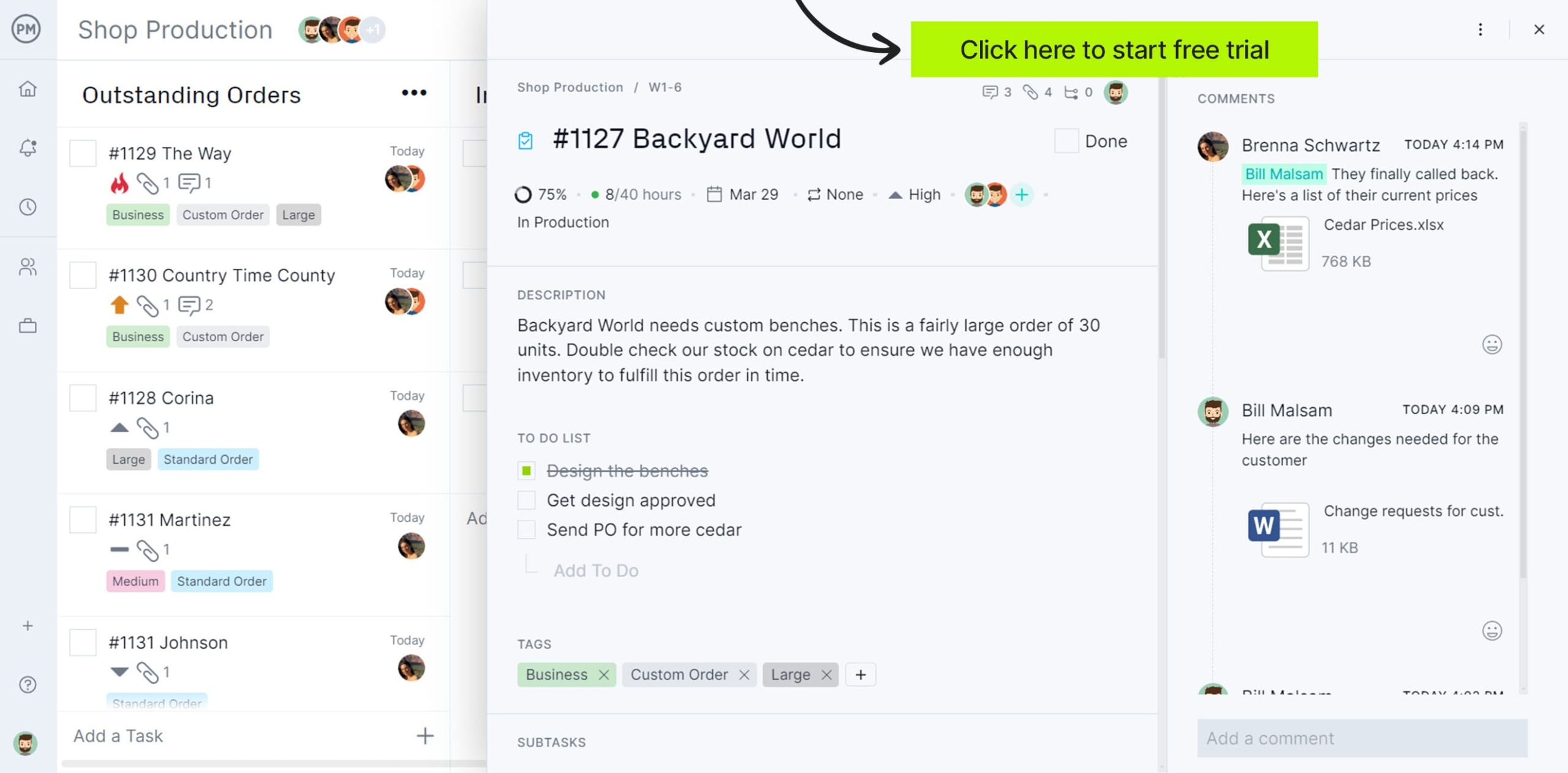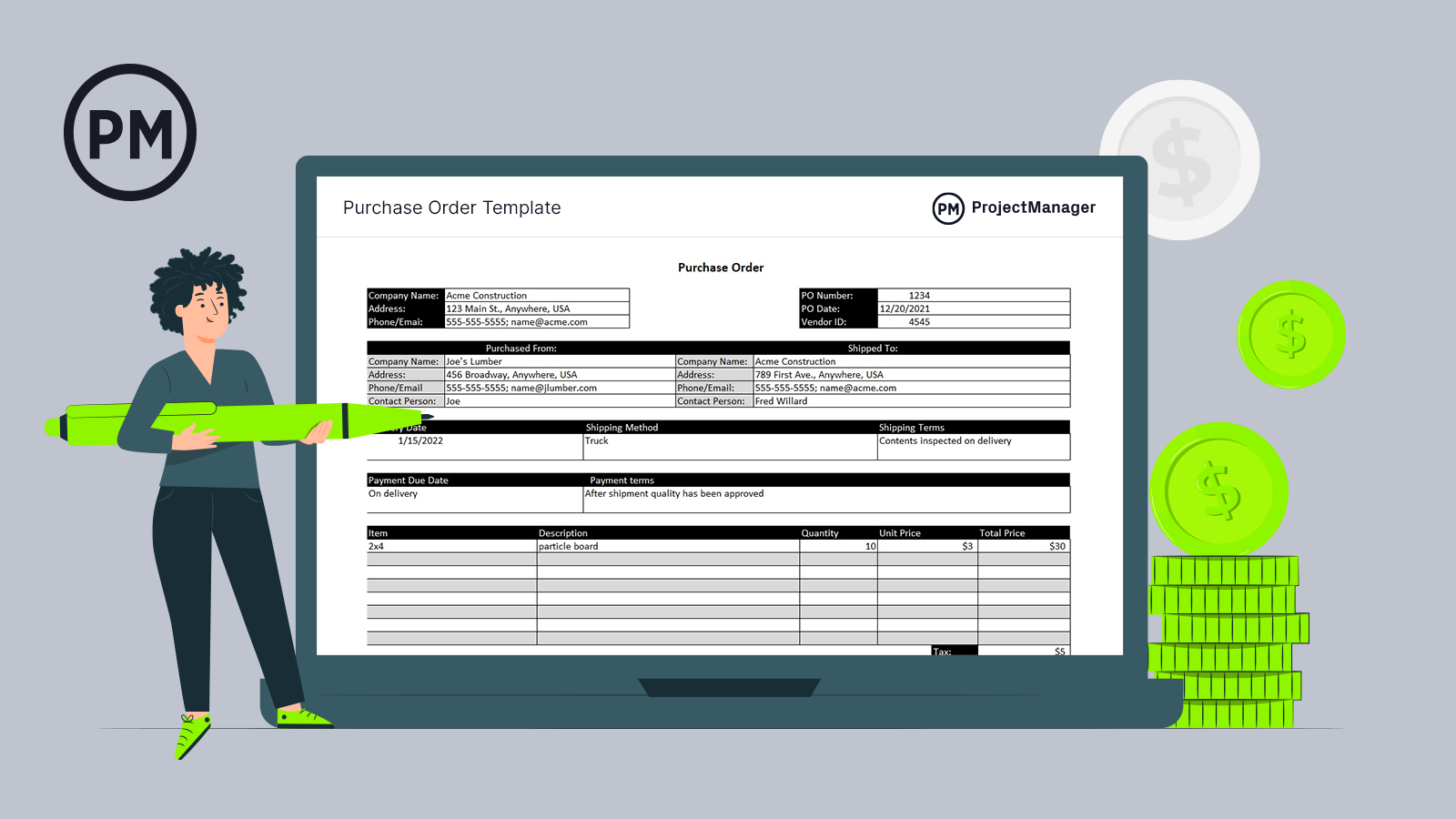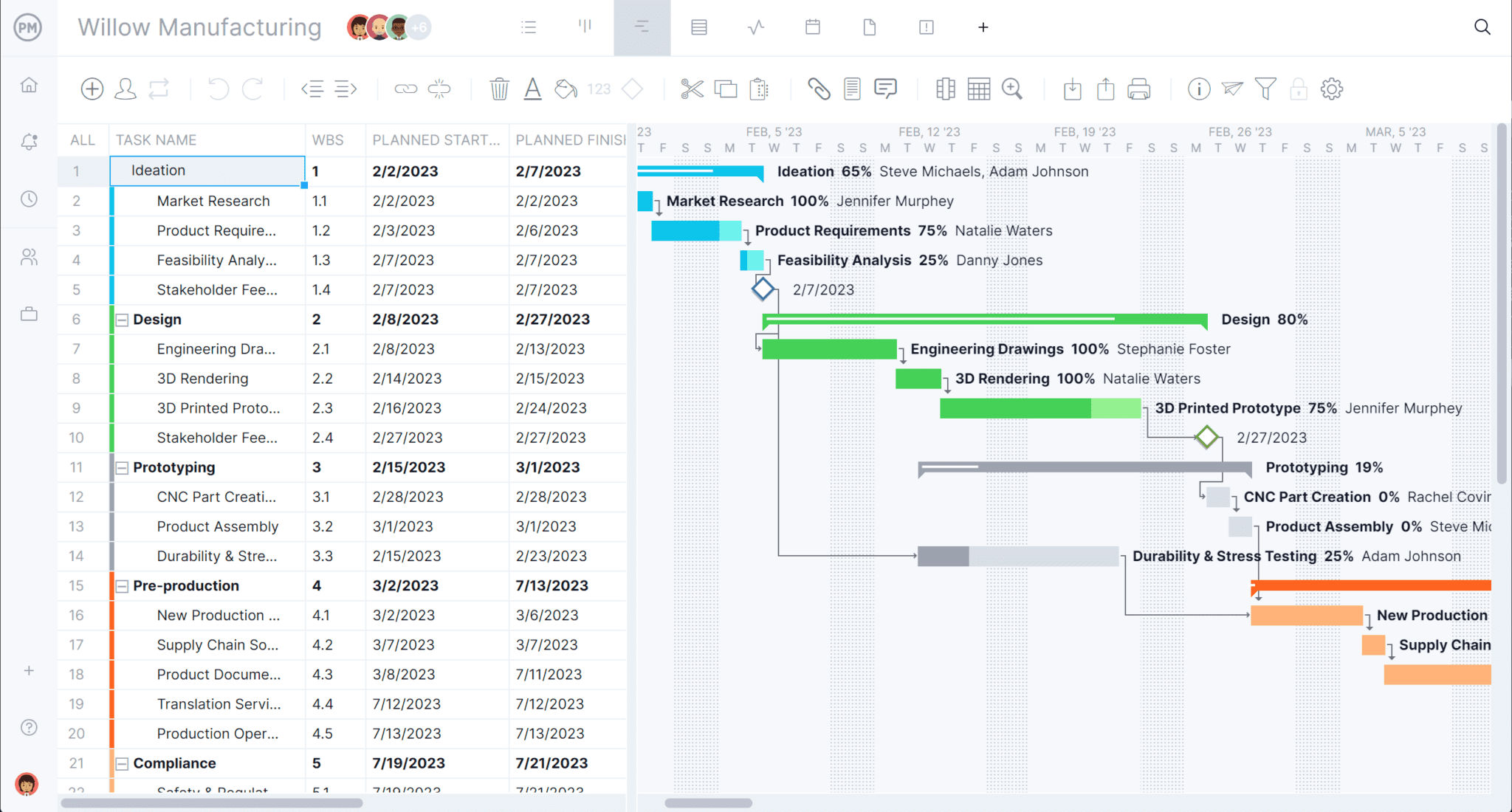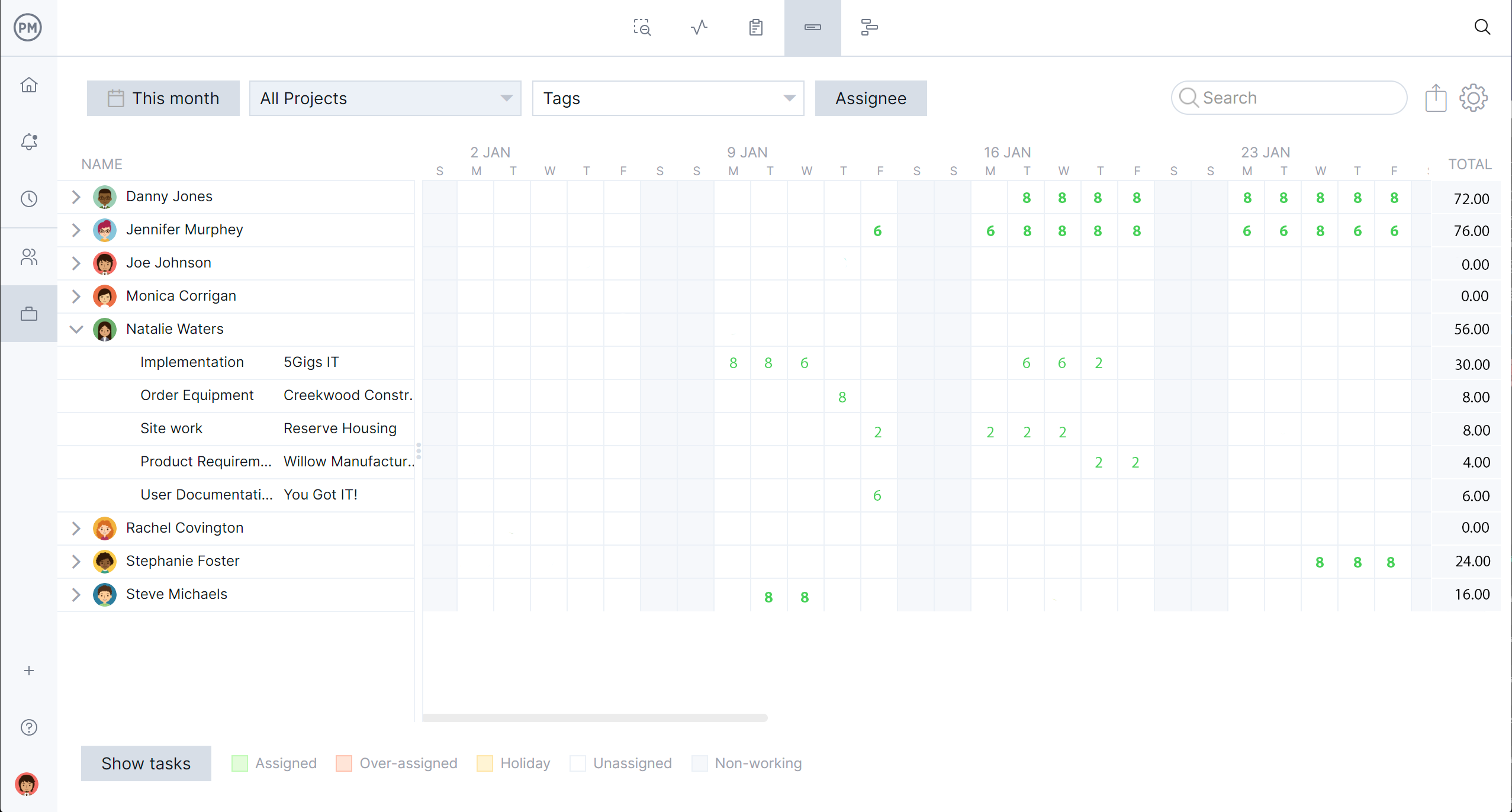Products go through many processes before they reach a customer. Once a product has been manufactured, how does it reach the customer? That’s called order fulfillment.
What is order fulfillment and how does it differ from order processing and order management? We’ll explain that, the order fulfillment process and list the different types of order fulfillment models.
What Is Order Fulfillment?
Order fulfillment is part of the larger supply chain management process, specifically, the receiving of goods and then processing and delivering orders to customers. Order fulfillment begins when a customer places an order. It ends with their receipt of that order.
There are occasions when a customer will return a product for several reasons, so a return transaction is also part of the order fulfillment process even if it’s not always enacted. There’s also short-term storage in a warehouse or distribution center involved.
The order fulfillment process can be complicated and costly. Companies will have their order fulfillment either as an in-house department or they might outsource the process to a third-party logistics (3PL) company.
Managing the various stages of order fulfillment can be more efficiently facilitated through project management software. ProjectManager is award-winning project and portfolio management software with customizable kanban boards that can manage the workflow of the order fulfillment process, even automating simple or repetitive tasks. Attach customer orders to kanban cards that can then be prioritized, tagged, scheduled and more. Managers get transparency into the process and can provide customers with an accurate delivery time. Get started with ProjectManager today for free.

Order Fulfillment vs. Order Processing
Order fulfillment is the larger process of which order processing is one of the more critical steps. Order processing is the workflow that helps manufacturers plan their production schedule to ensure that customer orders are prepared and delivered to the right place. The goal is to have as efficient a workflow as possible to keep the company’s customers satisfied.
The order processing workflow includes picking inventory, sorting items, packing and shipping orders. We’ll define these phases of the order-processing workflow in a moment. However, the workflow starts with confirming the products are in place and ends with distributing them to the customer.
Order Fulfillment vs. Order Management
Order management, on the other hand, oversees and coordinates the entire life cycle of an order, from its initiation to its delivery or possible return. It captures an order across channels, deals with payment processing and verification, tracks and updates orders and inventory and deals with returns, exchanges or customer questions.
Order fulfillment is only concerned with the logistical processes, such as receiving orders, getting them from the warehouse and delivering them to the customer. The primary objective of order fulfillment is getting the right product to the right customer, while order management seeks to streamline the administrative aspects of sales, improving customer experience and efficient order processing.

Get your free
Purchase Order Template
Use this free Purchase Order Template for Excel to manage your projects better.
Order Fulfillment Process
As noted above, the order fulfillment process can be broken down into four steps: receiving, processing, inventory management and returns processing. As promised, let’s take a closer look at this process.
1. Order Receiving
This is the beginning of the order fulfillment process, which starts when a business receives a purchase order from a customer. The customer could have previously communicated with the vendor through a request for quote (RFQ), which asks for a quote before submitting a purchase order, but this is not always the case.
The purchase order itself will include the item, quantity, shipping details, etc. In some cases, manufacturers send a sales order back to the customer to confirm their order has been received and will be completed by a scheduled delivery date.
2. Order Processing
Processing the purchase order involves four steps: picking the inventory, sorting, packing and, finally, shipping. To understand the order processing workflow of order fulfillment, let’s define each of those stages.
- Picking: Selecting the quantity of items from inventory. To do so more efficiently, there’s piece picking, which collects the products one order at a time; zone picking, where each picker is responsible for a specific warehouse zone; and batch picking, where pickers collect products for several orders at once.
- Sorting: Separating picked items according to their destination. This is an essential step for accurate delivery and customer satisfaction as it also inspects items to ensure they’re in good condition.
- Packing: This isn’t just putting items in boxes to ship but making sure that it’s the right box and the item is protected throughout delivery. There’s also weighing the package, labeling it and adding any shipping instructions. This should be done as cost-effectively as possible.
- Shipping: Transporting orders to their destination, whether directly to the customer or consolidated with other orders going to nearby locations to save money.
3. Inventory Management
While not directly a stage of the order fulfillment workflow, inventory management still plays a crucial role by making sure that stock is always at an optimal level. This is important because it prevents stockouts, reduces holding costs and enhances the efficiency of order fulfillment.
Inventory management done right will increase the amount of timely order processing, reduce backorders and improve overall customer satisfaction. There are various techniques for inventory management such as the 2-bin inventory control system, lean manufacturing, just-in-time manufacturing or kanban inventory management.
4. Returns Processing
While not always part of an order fulfillment process, returning products can happen and shouldn’t be overlooked. Processing any returns is overseen by the fulfillment team, which must count them, inspect for accuracy and damage and re-enter the item into inventory.
What Is an Order Fulfillment Center?
An order fulfillment center is part of the larger supply chain management and acts as a hub for all logistic processes required to get an item from the vendor to the customer. An order fulfillment center handles processes, such as ordering picking and processing to packaging and shipping.
A fulfillment center can be a third-party logistics provider or part of the vendor company that’s selling the items. In general, these are larger in size and scale. They manage the vendor’s inventory, store it and manage the order fulfillment operation.
Types of Order Fulfillment Models
There are three types of order fulfillment models: in-house, third-party and dropshipping. Each is best for different types of business depending on shipping volume, customer location and team strengths. The three types of order fulfillment models are listed below.
In-House Order Fulfillment
Also called merchant fulfillment, is when the vendor does the order fulfillment process. It’s a popular model of order fulfillment and is best for smaller businesses with low sales volume as there are no fulfillment fees and the vendor has control of the process. However, it’s time-consuming and expensive and human error can occur.
Third-Party Order Fulfillment Services
Also called a third-party logistics service, they’re hired to do the entire order fulfillment process. This is ideal for growing businesses with increasing sales volume. The number-one advantage is that order fulfillment is taken off the vendor who can focus on making their items. It saves the vendor from having to hire seasonal logistic staff for busy periods, tends to lead to faster fulfillment and localizes inventory closer to customers. But it’s an added cost and can lead to customer service issues.
Dropshipping
This order fulfillment model also takes the process away from the vendor and another company ships the product to the customer. Unlike third-party order fulfillment services, dropshipping doesn’t warehouse inventory. Therefore, one can start with no budget as there are no inventory or storage fees. It also removes inventory management and frees time for other tasks, such as marketing. However, there’s no control, shipping delays are common and a reliable dropshipper is hard to find. This is then used by entrepreneurs starting a business on a budget.
Why Is Order Fulfillment Important for Businesses Across Industries?
Order fulfillment is important for many reasons. Below are just a few reasons why businesses should invest in their order fulfillment and develop useful workflows to increase efficiency.
- Increases customer satisfaction, drives repeat business, stimulates growth through positive word of mouth, which improves customer retention and brand loyalty
- Boosts sales and revenue by reducing labor, inventory management and shipping costs as well as faster turnaround times
- Reduces order processing time, which leads to more timely deliveries
Purchase Order Template
This free purchase order template for Excel captures all the information necessary to describe and deliver a specific product. There are spaces to list delivery dates, method and terms, payment and descriptions of the item, including quantity, unit price and total price after taxes.

More Free Order Fulfillment Templates
Software will run a more efficient order fulfillment process, but not everyone is ready to upgrade immediately. If that’s the case, there are many free templates available to help with the order fulfillment process. Below are a few of the over 100 free project management templates for Excel and Word that can be downloaded now.
Sales Order Template
This free sales order template for Excel helps you gather important details about your customers’ orders such as an itemized list of the products they’re buying, their quantity, payment and shipping terms, among other information that will help avoid misunderstandings during the order fulfillment process.
Production Schedule Template
Our free production schedule template for Excel can help you with supply chain management. Use it to manage your resources so your sales team has a plan to deliver products to customers as needed.
Inventory Template
Inventory management is part of a smooth-running order fulfillment process. The free customizable inventory template helps keep track of what’s in stock and when levels are low enough to trigger replenishment. It also adds costs and quantities of inventory.
How ProjectManager Helps With Order Fulfillment
Templates are fine when used for purchase or sales orders, but they’ll fall short for inventory management and order fulfillment processes. For those workflows, project management software is ideal because it’s collaborative and users don’t have to manually update templates. ProjectManager is award-winning project and portfolio management software that can help manage order fulfillment workflows with powerful kanban boards that track inventory, sorting, packing and shipping.
Plan, Schedule and Track Each Step of the Production Process
Order fulfillment is only part of the larger manufacturing process. Creating the products to stock, package and ship requires planning, especially as inventory gets low and needs replenishing. Having powerful Gantt charts organizes production phases, links task dependencies to avoid costly delays and even filters for the critical path to identify essential tasks that need to be completed for the production to be successful. Then set a baseline to capture that plan and compare it in real time to actual progress to stay on schedule.

Monitor Progress, Resource Utilization & Costs
Keeping production on schedule requires monitoring the process in real time. Live dashboards monitor progress, costs and resource utilization by automatically collecting real-time data and displaying it in easy-to-read graphs and charts. Toggle over to the color-coded workload chart to get a picture of the team’s allocation. If some are overallocated, balance their workload from the chart to keep everyone working at capacity and productive.

Related Inventory, Production and Logistics Content
Order fulfillment is only one part of inventory management, production, logistics and manufacturing. If interested in learning more about kanban inventory management, production scheduling and more, follow these links for more free content.
- Kanban Inventory Management: How to Run a Kanban System
- Production Scheduling Software for Manufacturing Projects: Free & Paid Options Ranked
- Purchase Management: A How-To Guide With Best Practices
- Logistics Management 101: A Beginner’s Guide
- How to Make a Production Order for Manufacturing
ProjectManagement is online project and portfolio management software that connects teams whether in the office, on the factory floor or anywhere in the world. They can share files, comment at the task level and stay up to date with email and in-app notifications. Join teams at Avis, Nestle and Siemens who use our software to deliver successful projects. Get started with ProjectManager today for free.



